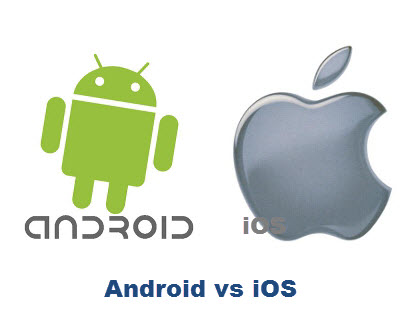Last Updated: June 18th, 2018
Mobile app development market has grown rapidly with more and more people joining mobile app development bandwagon. As per reports from eWeek, the number of mobile app developers in 2016 was 12 million and it is expected that by 2020 it will reach 14 million. Mobile app development is a lucrative career, a mobile app developer in the US earns $102,000 yearly approximately. If you are someone who is looking forward to specializing in mobile app development and confused between iOS vs Android development, let us go through a detailed comparison between iOS and Android operating systems.
iOS vs Android Development
Demographics
Before you take a dive into mobile app development you need to ask who will be your target audience and how much are they willing to pay?
iOS:
iOS users are mostly young, highly educated, have high income and spend more time per app. They are mostly based in the US and Europe.
Android:
Android users are usually from developing countries having a lower-income and spend less time per app.
Programming Languages And Development Tools
iOS:
The programming languages used the development of iOS apps are Swift and Objective C-language. Objective-C requires a lot of coding and Apple uses this programming language for iOS and OS X operating systems. If you know C and C++ you won’t find Objective-C difficult. To develop iOS and OS X apps you need Apple devices which can be costly.
Xcode IDE (Integrated Development Tool) is used as a development tool for iOS and OS X. Xcode features a source editor, version editor, built-in interface builder, simulator, compilers and much more. You need to enroll yourself in iOS development Program by paying a yearly subscription of 99$.
Android:
Android, on the other hand, is an open-source operating system and uses a popular programming language Java for its app development. Java is one of the most popular programming language used by 9 million of developers. Android apps can be developed on Linux, Windows or Mac operating systems.
Android uses Android Studio as its development tool which can be downloaded for free. However, Android Studio lacks the features and functionalities present in Xcode of iOS.
Development Speed
Android:
Android devices come in various shapes, sizes, and versions of Android and hence developing apps for all those Android devices can be time-consuming and difficult for Android app developers. Currently, Android Nougat is available for only 0.5 percent of Android devices while Android Lollipop is available for 33.4 percent of devices. The development of Android apps takes about 2 to 3 times more time than that of iOS apps because of system release cycle and Android fragmentation.
iOS:
Apple’s latest mobile operating system iOS 10 which was released in September last year is found in 76 percent of iOS devices. iOS devices support newer mobile operating system and support for older iOS versions is stopped so the iOS developers have to spend less time on testing and speeds up the development speed. The iOS apps are being updated more frequently as compared to Android apps.
Publishing
Android:
Publishing Android apps on Google Play Store is easy as compared to Apple’s App Store. To publish an Android app you will have to just make a one-time payment of $25 on Google Play Store and upload your APK. Once your app is live users will be able to download it.
iOS:
To publish an App on the Apple’s App Store you need to make an annual payment of 99$ and submit your app for testing. The Apple’s App Store may take 3-4 weeks to approve an app.
Revenue
iOS:
In terms of revenue earned from the apps, Apple’s App Store is a clear winner, App Store earns 75 percent more revenue than the Google Play Store. The revenue earned by sales of apps from the App Store comes mostly from the app purchases and in-app purchases.
Android:
Gooogle Play Store has more downloads as compared to the App Store but revenue earned by app sales from the Google Play Store is lower. One of the main reason of lower revenue is that the Android users mostly download free apps.

